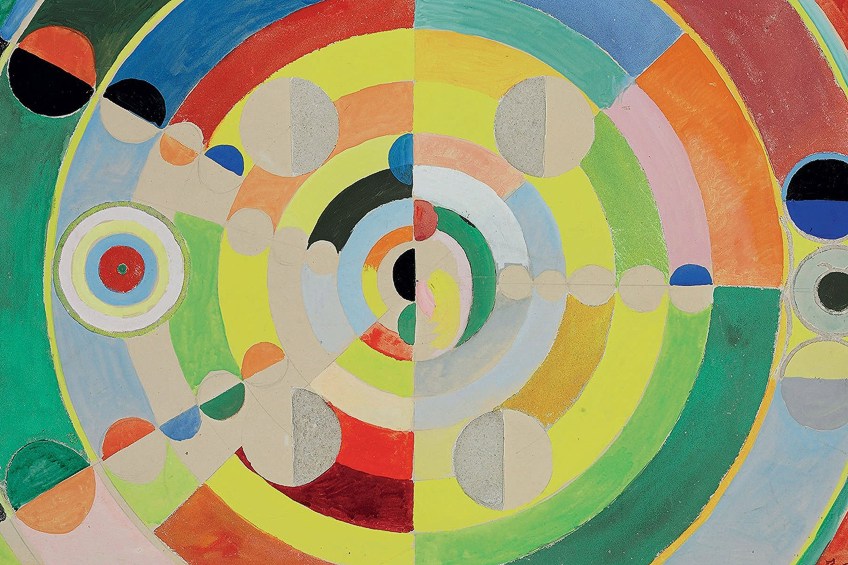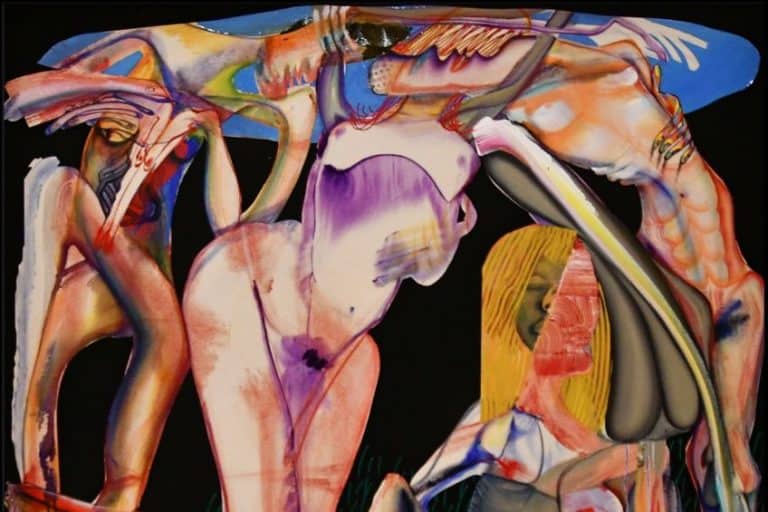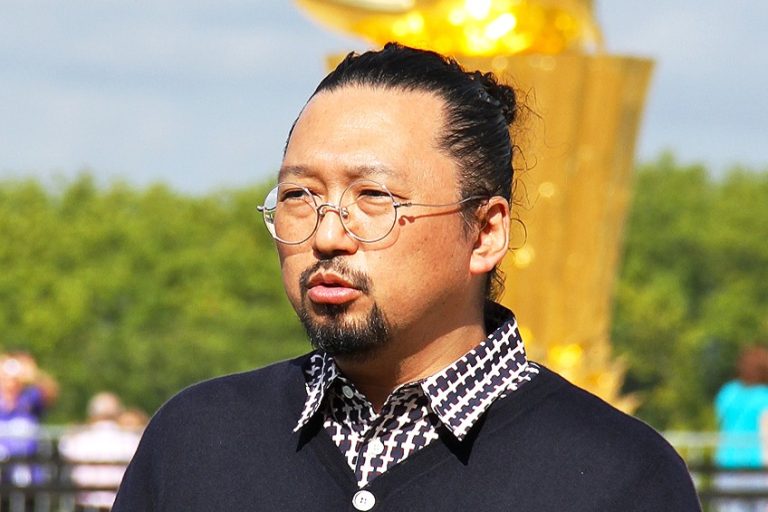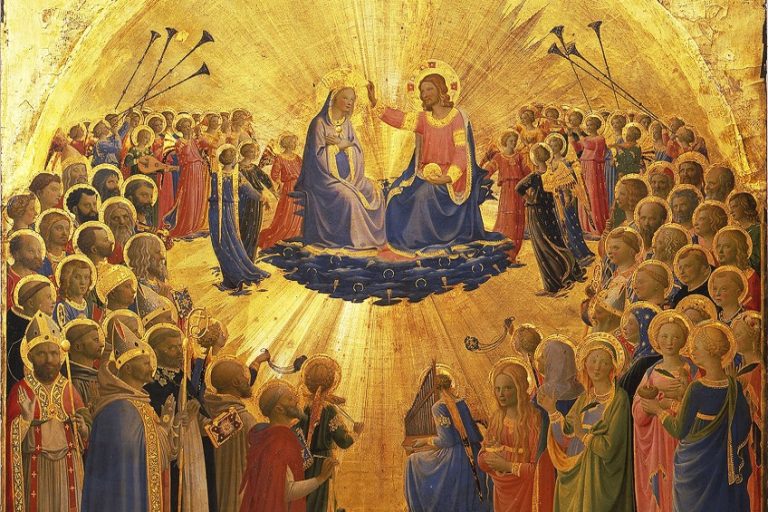Robert Delaunay – The Painter Who Put Color Into Cubism
Robert Delaunay was one of the most unique artists of the early 20th century in Europe. Delaunay and his wife were the founders of Orphism. His colorful works were based on formalistic experimentation and, as a result, became both visually and intellectually stimulating. His vibrant colors and geometric shapes are a testament to his passion for experimentation with the tone and depth of color. Through his unique style, Delaunay played a pivotal part in the development of abstract art.
Artist in Context: Robert Delaunay’s Biography
Robert Delaunay’s biography boasts that he was one of the first painters whose work was completely non-representational. He was one of the leading artists working in the early 20th century in Europe. His paintings are a unique stylistic fusion of the artistic trends of the time, including Cubism, Neo-Impressionism, and Fauvism.
In his early career, he was influenced by the use of color by the neo-Impressionist painters, and soon after, in 1910, he made his first big contribution to Cubism, with works such as his dynamic Red Eiffel Tower (1911-1912). This was the start of his works developing a more poetic and mystical style. His later work, made during his “Orphic” period, directly influenced the famous group of Expressionist painters, called Der Blaue Reiter.
By 1912, Delaunay’s work had become completely non-representational, and he continued to paint non-objective works, inspired by color theory, that would become known as “Orphism”.
| Date of Birth | 12 April 1885 |
| Date of Death | 23 October 1941 |
| Country of Birth | Paris, France |
| Art Movements | Orphism, Cubism |
| Genre / Style | Abstract |
| Mediums Used | Oil Painting |
| Dominant Themes | Color Theory |
The Early Years
Robert-Victor-Félix Delaunay was born in 1885 to an upper-class family in Paris. This financial stability did not, however, shield him from a difficult early life and his parents, George Delaunay and Countess Berthe Félicie de Rose, got divorced when he was four years old. After the divorce, he moved to a town near Bourges, where he was raised by his aunt and uncle. After failing his final exam in school, he told his uncle that he wanted to be a painter. At his request, Delaunay’s uncle sent him to Paris to be an apprentice at a theater studio called Ronsin’s Atelier. Here, he learned to paint large theater sets.
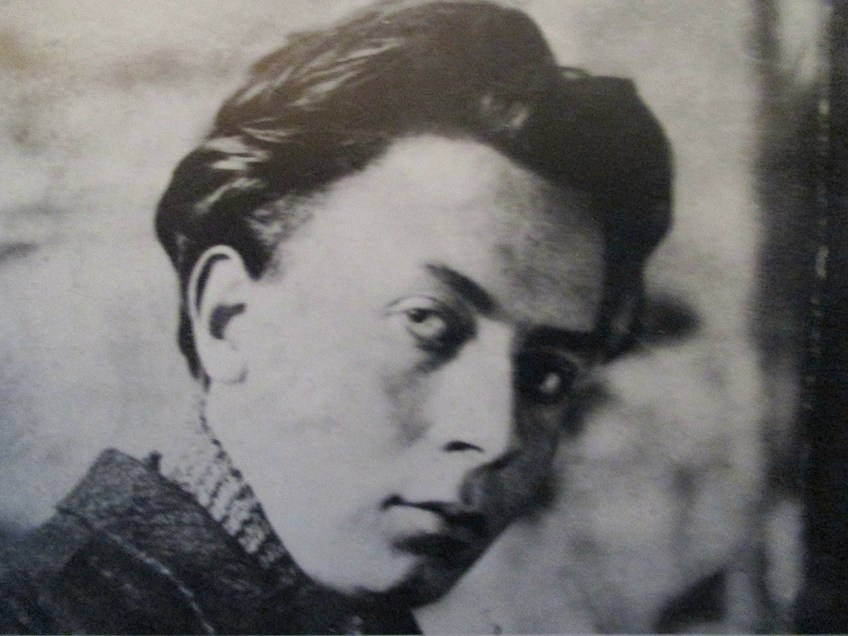
When Delaunay turned 19, he decided to leave Ronsin’s atelier so that he could focus exclusively on painting. Delaunay started painting in 1903, and his first works were exhibited in 1904. Robert Delaunay, the artist, traveled to Brittany where he met Henri Rousseau, a post-Impressionist painter who was an early influence on his work. When he returned to Paris, he experimented with paintings inspired by the Pointillism style of Georges Seurat. During this time, he became friends with artist Jean Metzinger and together they studied the color theories of Michel-Eugène Chevreu.
Their works were colorful and mosaic-like and they often painted each other’s portraits.
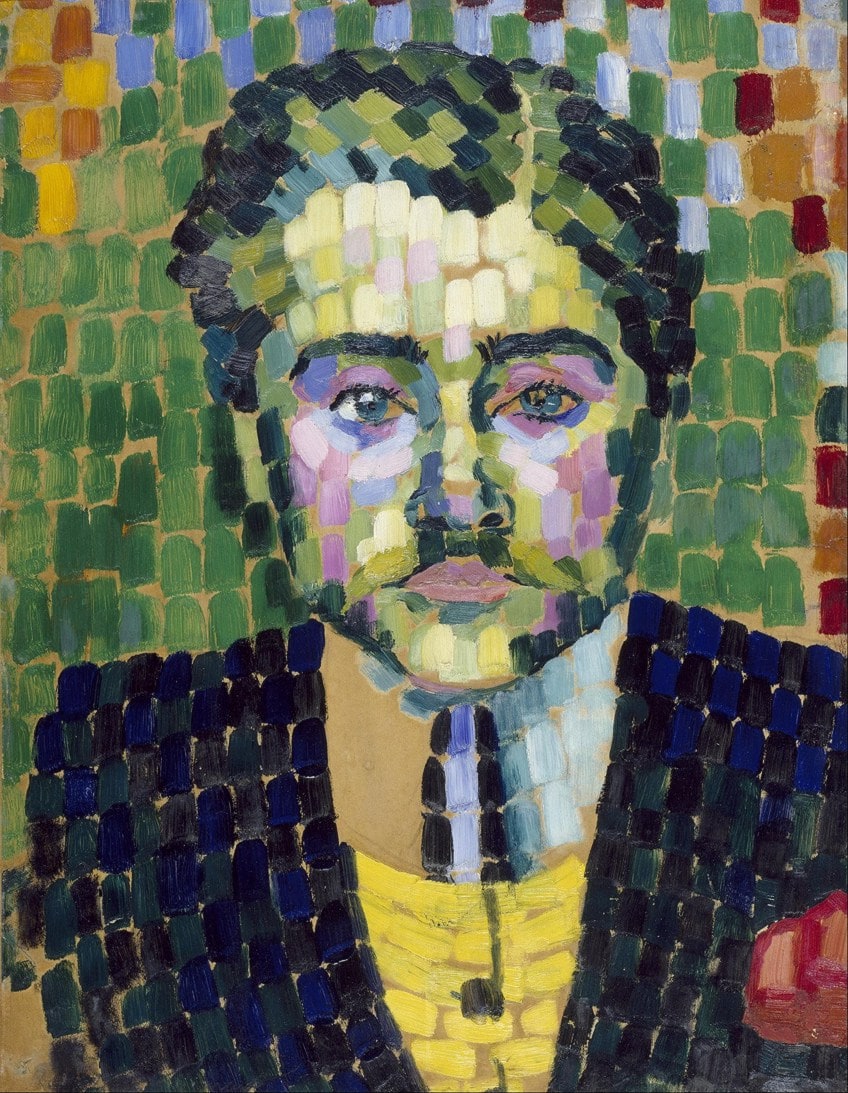
Sonia and Orphism
In 1909, Robert Delaunay met artist Sonia Terk. Delaunay was attracted to Sonia, but she was married to Wilhelm Uhde, who was an art dealer and the owner of a gallery called “rue Notre-Dame-des Champs”. Sonia Terk called her marriage to Wilhelm Uhde a “marriage of convenience” to mask Uhde’s homosexuality, and she and Delaunay had a passionate love affair despite her marital status. When Sonia Terk became pregnant, she and Uhde got divorced. She married Delaunay in 1910 and they collaborated in work for over 30 years.
Robert and Sonia Delaunay’s creative collaboration is one of the most remarkable in history. Together, they founded and led the movement of Orphic Cubism, or Orphism for short.

Orphism developed out of Cubism and is influenced by the flat planes of Fauvism and the color experimentation of Impressionism. The works they created were brightly colored and had elements of the geometric deconstruction of cubism. These works were some of the first purely abstract works in Europe. It was in this period where poet Guillaume Apollinaire coined the work of the Delaunays as “Orphism”. This name was derived from Orpheus, the Greek mythological musician.
Mature Period
Before the First World War, Paris was the epicenter of avant-garde art. Delaunay was fascinated with the rate at which innovation and experimentation took place all around him. He was exhibiting well in Paris and from 1904 until 1914, he was showing work at the “Salon des Independants”, whose annual exhibitions set trends for artists in Europe.
His colorful and dynamic works aimed to capture the rhythm and movement of the modern city of Paris.

At the age of 27, a year after the birth of his only son, Delaunay had his first solo show. The exhibition was at the Galerie Barbazanger in Paris, where his work was openly admired by Wassily Kandinsky. Kandinsky then invited him to exhibit at the first “Blaue Reiter ” exhibition in Germany. Soon after, he created his Eiffel tower series, which received high praise from artists, collectors, and curators alike.
Hereafter, his work became increasingly non-representational, and he was one of the artists that art critic Andre Warnod called the “blossoming new school” that transcended Cubism.
The Delaunays were a social couple and they held Sunday salons in their home that were well attended by many artists, poets, musicians, and writers. They also attended weekly dances at Montparnasse and arrived late to make a fashionable entrance, wearing colorful outfits created by Sonia. Their outfits gained international acclaim. They continued with this extravagant lifestyle until the start of the First World War in 1914.
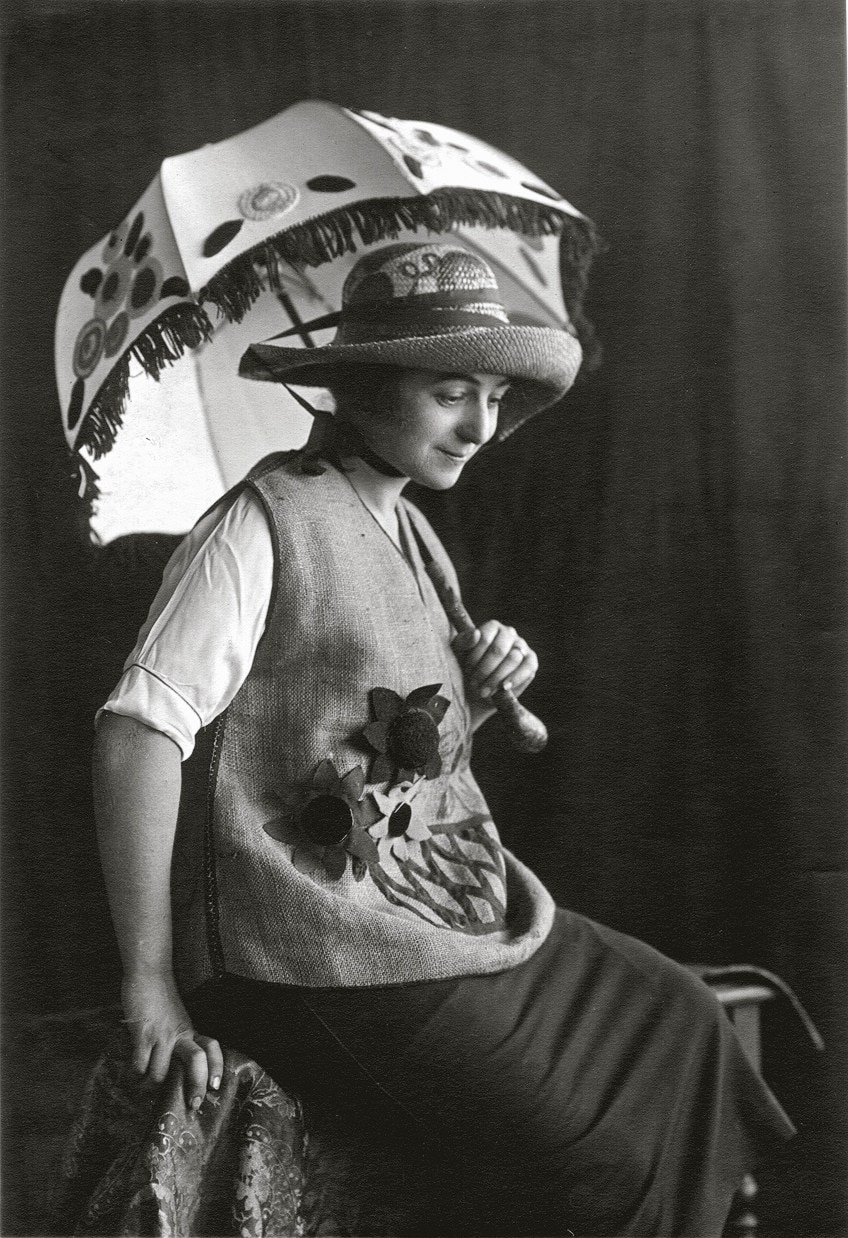
During the war, they stayed first in Portugal and then in Spain. Even though they tried to avoid the war, Robert Delaunay finally enlisted in 1916, only to be declared unfit, thanks to his large heart and weak lungs. By 1917, the couple’s finances were dwindling and Sonia, in an attempt to provide for the family, decided to open up her own fashion boutique, called Casa Sonia. By 1920, Sonia was an established fashion designer, and the Delaunays returned to Paris where they yet again hosted their Sunday salons.
Even though their life had seemingly returned to normal, Robert Delaunay had not exhibited for years, and his career was lagging behind his wife’s.
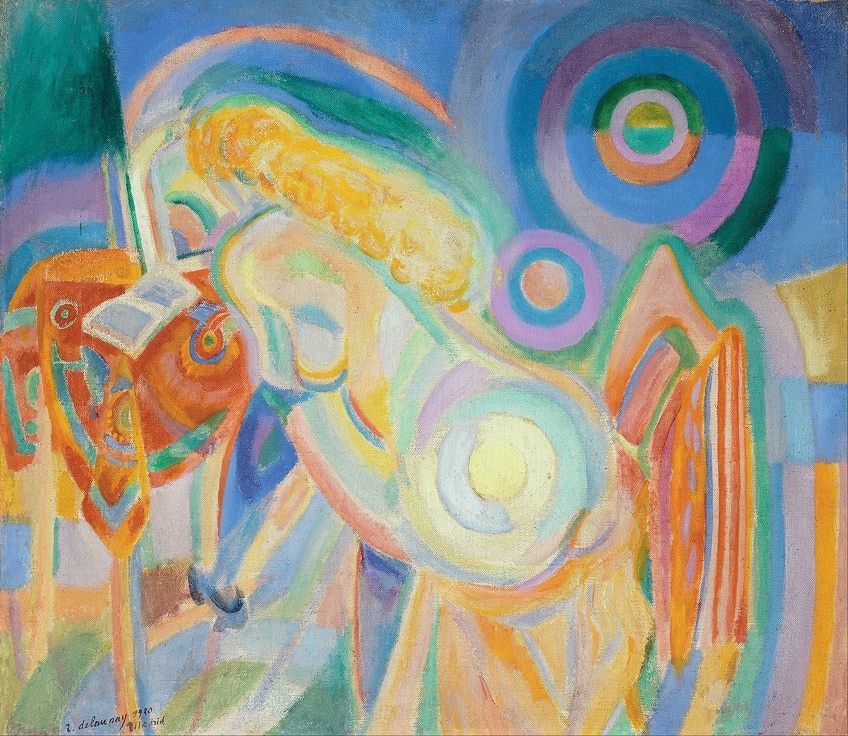
The Late Years
In the late 1920s, Robert Delaunay had attempted to make figurative work, but found no success in it and returned to abstraction. His passion however had seemed to dwindle, and by the mid-1930s, he had many unresolved works that lacked courage. Sonia, who was very successful in fashion design and now owned multiple boutiques, also missed the painting of her early life.
When the Wall Street crash crippled her business, she decided to close her boutique and they decided to return to live and paint as they did when they were younger.
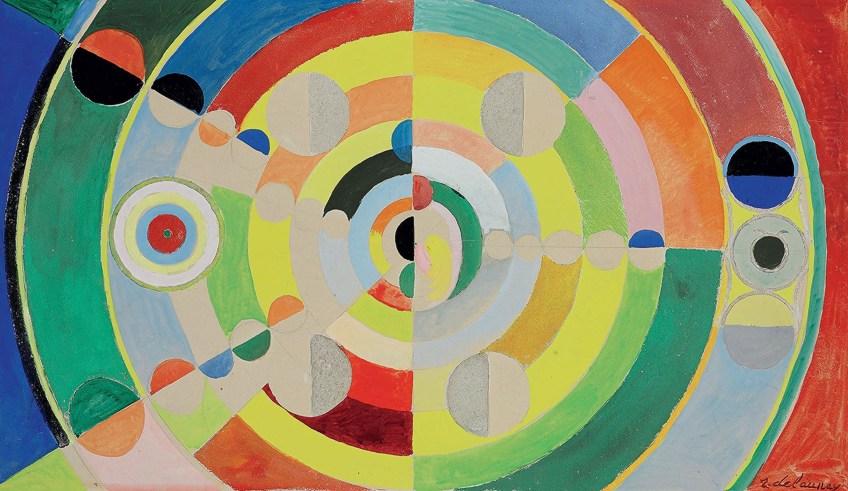
In 1932, the couple was invited to take part in the Exposition Internationale des Arts et Techniques dans la Vie Moderne of 1937, with an emphasis on public art. Robert Delaunay took the lead in the project and recruited 50 unemployed artists to assist him in his vision of painting huge murals for the aeronautical pavilion.
The murals achieved great success but were overshadowed by Picasso’s “Guernica”, which was part of the same exhibition.
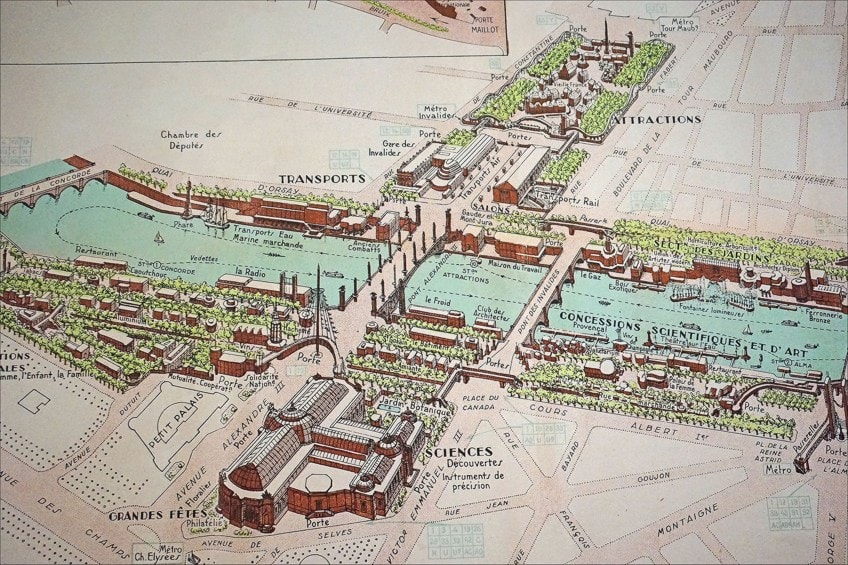
His success at the International Exposition was great enough that they asked the Delaunay couple back the following year. Here he would produce his last works, murals for the Sculpture Hall at Salon des Tuileries.
Soon after these successes, the Delaunay family fled to Montpellier in France in an attempt to escape the Nazi invasion of the Second World War.
Robert Delaunay’s health was however already deteriorating fast, and soon after the move, he passed away from cancer. Sonia and his son survived him, and Sonia paid tributes to him through her work. Sonia died in 1979.
Robert Delaunay Paintings
Delaunay’s paintings continued to develop throughout his life. Below is a list of four Robert Delaunay paintings that mark pivotal shifts in his career. The works start from his first, more figurative works and develop to the first works where his style became what we know him for today: complete abstraction in the Orphic style. These works will be analyzed in the subheadings to follow.
- Saint-Séverin No. 3 (1909-1910)
- Red Eiffel Tower (La tour rouge) (1911-1912)
- The Three Windows, the Tower and the Wheel (1912)
- Simultaneous Contrasts: Sun and Moon (1913, date on painting 1912)
Saint-Séverin No. 3 (1909-1910)
| Artwork Title | Saint- Séverin No.3 |
| Date | 1909-1910 |
| Medium | Oil on Canvas |
| Size | 113.8 x 89.5 cm |
| Collection | Solomon R. Guggenheim Museum |
This Robert Delaunay artwork depicts the Saint-Séverin gothic church in Paris. This church was the first subject of Robert Delaunay’s first series of paintings. The paintings captured the way in which light poured and fractured through the church’s stained-glass windows. The effect was slightly distorted compositions of the architecture of the church, which is seen to be the first traces of Cubism in Delaunay’s work.
The color palette of the work, which is slightly subdued, is an early influence of Paul Cézanne. Delaunay was attracted to windows and the fracture of light through them in many of his works.
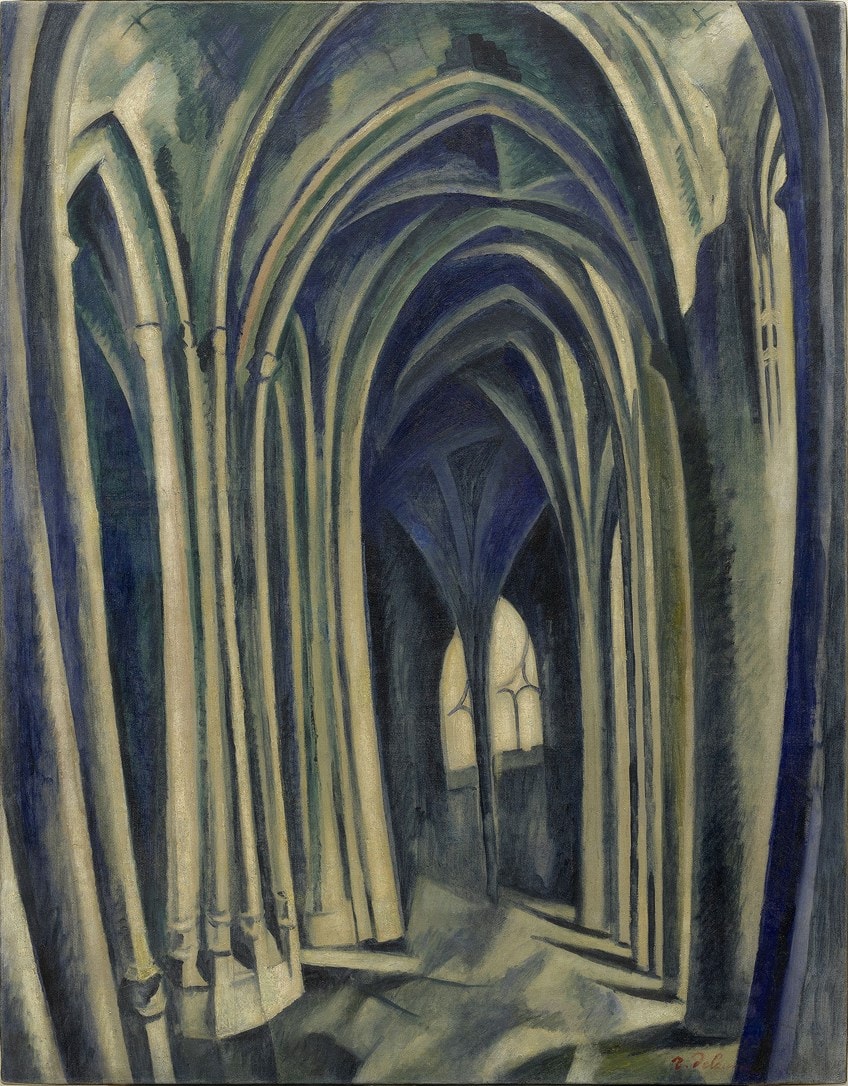
Red Eiffel Tower (La tour rouge) (1911 – 1912)
| Artwork Title | Red Eiffel Tower (La tour rouge) |
| Date | 1911 – 1912 |
| Medium | Oil on Canvas |
| Size | 125 x 90.3 cm |
| Collection | Solomon R. Guggenheim Museum |
If Robert Delaunay’s paintings of the Saint-Séverin are the first traces of Cubism in his work, then his Red Eiffel Tower painting holds the first traces of going beyond the borders of Cubism. In this Robert Delaunay artwork, he painted the Eiffel tower from multiple perspectives, giving it a sense of movement, symbolic of the era of modernity and progress of Paris at the time.
Like the gothic cathedral, the Eiffel tower is also a French symbol of innovation and progress.
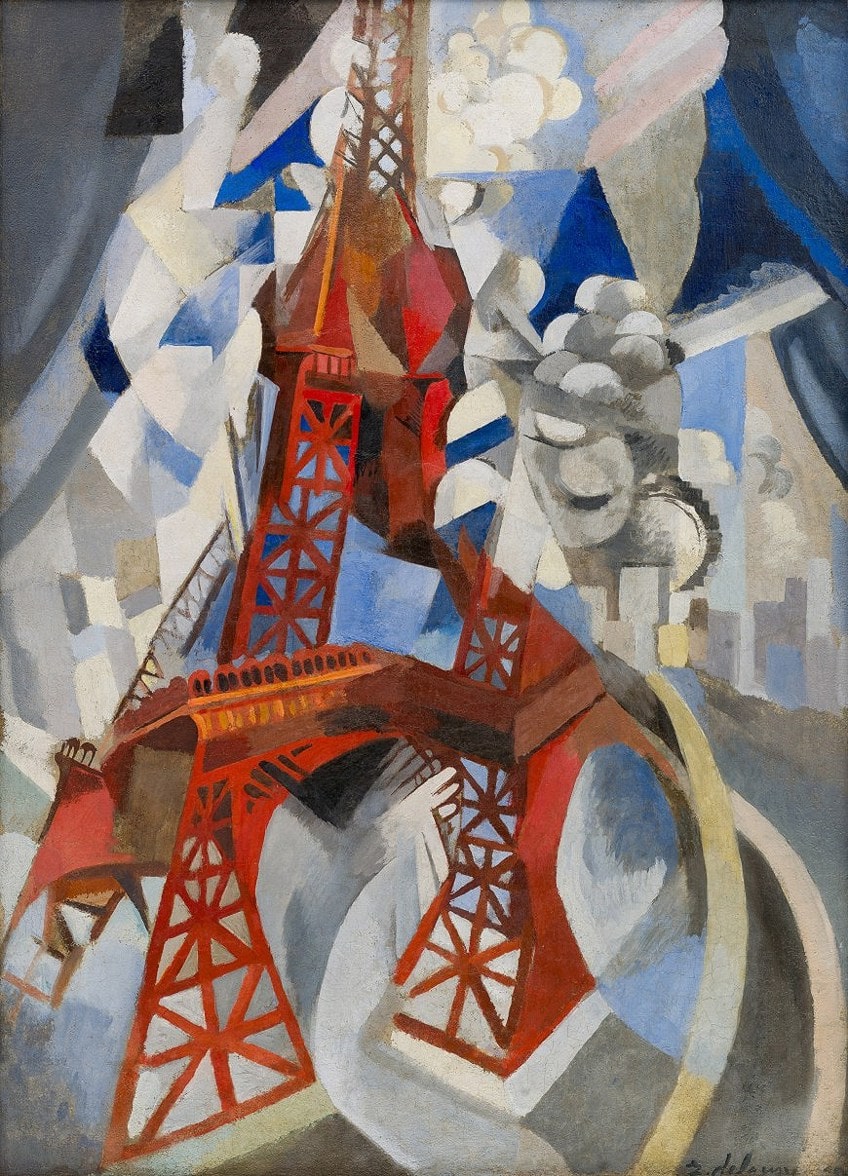
The Eiffel Tower was constructed when Delaunay was four years old, and he had a special relationship with it. The Eiffel Tower was a symbol of technological advancement, something that influenced the artist’s view of life greatly. It was also here, at the Eiffel Tower, that he and Sonia celebrated their engagement in 1909.
The Eiffel Tower was a popular topic for artists to paint at the time, and Delaunay created 14 paintings featuring the landmark.
The Three Windows, the Tower and the Wheel (1912)
| Artwork Title | The Three Windows, the Tower and the Wheel |
| Date | 1912 |
| Medium | Oil on Canvas |
| Size | 130.2 x 195.6 cm |
| Collection | Museum of Modern Art. Gift of Mr. and Mrs. William A. M. Burden. |
Whilst Robert Delaunay’s paintings of the Eiffel Tower still had elements of representational art, his “Simultaneous Windows” series stretched this to its limit. This series of works are the last works where there are recognizable objects still visible, like the outline of the Eiffel Tower. Delaunay’s window series rejects the traditional function of a window, rather offering a kaleidoscope of colors and planes that invite a more imaginative view of the window.
These works have rhythm, structure, feeling, and harmony.
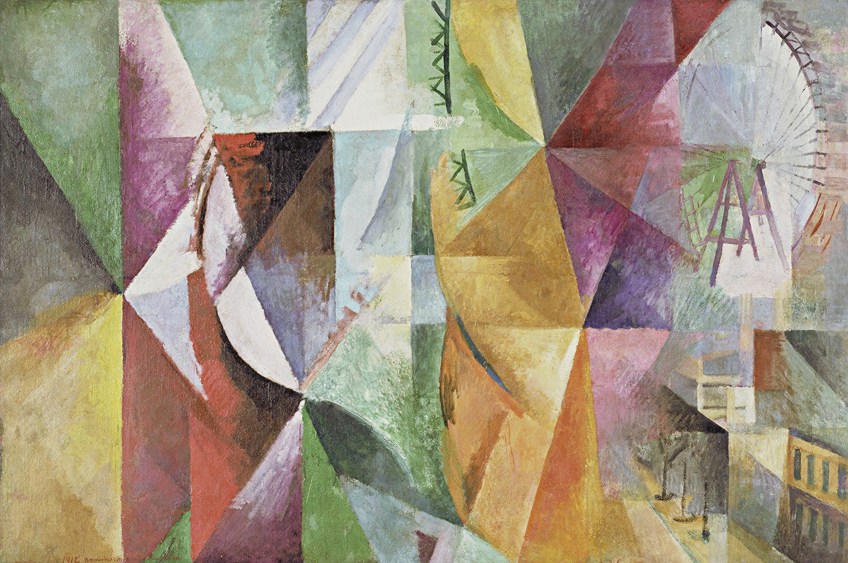
These words, according to Delaunay, were the start of his “constructive” phase. The fluid look of the colorful planes of the window gives the work a sense of movement. His attraction to windows comes from his early works, like the cathedral series, but now the glass planes became more than the fracturing of light, they became more symbolic of the transition between internal and external states of being.
Simultaneous Contrasts: Sun and Moon (1913, date on painting 1912)
| Artwork Title | Simultaneous Contrasts: Sun and Moon |
| Date | 1913, date on painting 1912 |
| Medium | Oil on Canvas |
| Size | 134.5 cm in diameter |
| Collection | Museum of Modern Art. Mrs. Simon Guggenheim Fund. |
This Robert Delaunay artwork is one of the first of his works that has completely moved into the abstract. By now, his work was purely focused on the experimentation of the tones and hues of colors and the effects of juxtaposing different colors next to each other. As always, Robert Delaunay’s artwork was interested here in the movement of things and the development of the world.
In fact, there was significant pressure on creators during this period to be the first at what they do, and therefore the painting is dated 1912, even though it was later discovered that the work was actually created a year later in 1913.
Simultaneous Contrasts: Sun and Moon, is a work that is inspired by the movement of the cosmos, the circular shape of the canvas refers to the universe. The work has a musical quality to it, relating to the musical Greek Orpheus after which “Orphism” is named.
The musical quality of the work is not by accident or coincidence.
In fact, the title of the work is derived from a book published in 1839 by Michel-Eugène Chevreul, titled On the Law of the Simultaneous Contrast of Colors. This book is a scientific analysis of color and Delaunay utilized this theory to create a work of music and harmony.
Book Recommendations
If you are interested in learning more about the work and life of Robert Delaunay, we recommend starting with these books:
Robert and Sonia Delaunay: The Triumph of Color (1994) by Hajo Düchting
This book, published by Taschen, celebrates the power of color as used by Robert and Sonia Delaunay. The book contains beautiful representations of both artists’ works and provides a good insight into their life and work.
- The works of Robert and Sonia Delaunay celebrate the power of color
- The couple's works express a creativity that goes beyond painting
- This book presents the work of both artists
Resisting Abstraction: Robert Delaunay and Vision in the Face of Modernism (2014) by Gordon Hughes
This hardcover book is the first English book published in over thirty years about Robert Delaunay as an artist. The book looks at the artistic vision of Delaunay and discusses his work as the first artist whose work was a response to the scientific theory of color and human vision.
- The first English-language study of Delaunay in more than 30 years
- Argues that Delaunay was the first to link abstraction to science
- Shows how Delaunay's works set him apart from his contemporaries
Robert Delaunay’s artworks are some of the most unique in the early 20th century in Europe. He was one of the first artists to truly break away from any form of representation. His works continued to influence countless artists such as Mark Rothko, and played a crucial part in the development of abstraction. Delaunay is considered the first artist to make work that responded to the scientific theories of color, distinguishing him from artists like Wassily Kandinsky, who used color for its spiritual and emotional qualities. If it wasn’t for Robert Delaunay and his wife Sonia Delaunay, who knows what course Abstract art would have developed into! It is thanks to this prolific couple in art history that we know of such a thing as Orphism.
Frequently Asked Questions
Who Inspired Robert Delaunay?
Robert Delaunay was influenced by many different artists. Some of these include early cubist artists like Pablo Picasso and Paul Cézanne. He was also influenced by Georges Seurat’s use of Pointillism and color. He appreciated the experimental use of color by Impressionist and post-Impressionist artists like Claude Monet, Henri Rousseau, and Paul Gauguin.
What Was Robert Delaunay’s Final Work?
Delaunay’s final major work was murals that he created for the aeronautical pavilion of the Salon de Tuileries. The inspiration for these works came from airplane propellers. The bright colors and circular shapes gave a sense of movement similar to that of a propeller. His painting Rhythm no. 1 is one of these murals.
How Do You Pronounce Delaunay?
Many people are unsure how to pronounce Delaunay. The surname is French, and its phonetic spelling is duh-law-ne.
Chrisél Attewell (b. 1994) is a multidisciplinary artist from South Africa. Her work is research-driven and experimental. Inspired by current socio-ecological concerns, Attewell’s work explores the nuances in people’s connection to the Earth, to other species, and to each other. She works with various mediums, including installation, sculpture, photography, and painting, and prefers natural materials, such as hemp canvas, oil paint, glass, clay, and stone.
She received her BAFA (Fine Arts, Cum Laude) from the University of Pretoria in 2016 and is currently pursuing her MA in Visual Arts at the University of Johannesburg. Her work has been represented locally and internationally in numerous exhibitions, residencies, and art fairs. Attewell was selected as a Sasol New Signatures finalist (2016, 2017) and a Top 100 finalist for the ABSA L’Atelier (2018). Attewell was selected as a 2018 recipient of the Young Female Residency Award, founded by Benon Lutaaya.
Her work was showcased at the 2019 and 2022 Contemporary Istanbul with Berman Contemporary and her latest solo exhibition, titled Sociogenesis: Resilience under Fire, curated by Els van Mourik, was exhibited in 2020 at Berman Contemporary in Johannesburg. Attewell also exhibited at the main section of the 2022 Investec Cape Town Art Fair.
Learn more about Chrisél Attwell and the Art in Context Team.
Cite this Article
Chrisél, Attewell, “Robert Delaunay – The Painter Who Put Color Into Cubism.” Art in Context. March 18, 2022. URL: https://artincontext.org/robert-delaunay/
Attewell, C. (2022, 18 March). Robert Delaunay – The Painter Who Put Color Into Cubism. Art in Context. https://artincontext.org/robert-delaunay/
Attewell, Chrisél. “Robert Delaunay – The Painter Who Put Color Into Cubism.” Art in Context, March 18, 2022. https://artincontext.org/robert-delaunay/.


